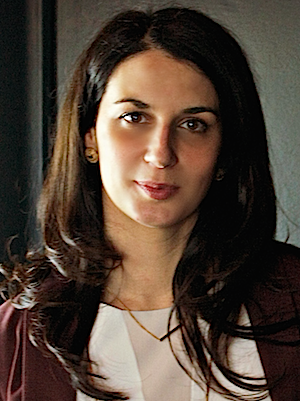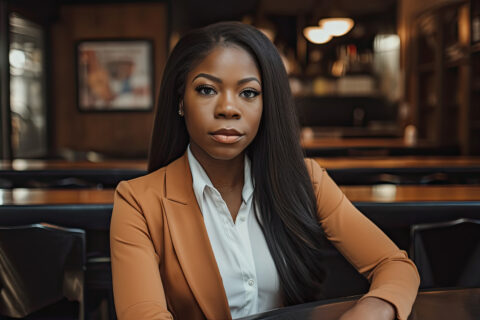
When I decided to start my consulting business in 2013, I had just read Chris Guillebeau’s book, The $100 Startup. I was committed to launching my business on a shoestring budget. I had no money in the bank anyway, so it was an obvious decision. I’d never been the type who spends money I didn’t have.
One year later, I had nothing to show for in my business: no clients, no income and definitely no fun. What I did have, on the other hand, was a big case of financial insecurity and impostor syndrome that was eating up what little confidence I had left in myself.
As I was planning the launch of my third product (the first two products I launched were complete busts, not because they were bad, but because I had no audience to sell them to.) it suddenly became crystal clear that I was doing what Albert Einstein described as the definition of insanity: “Doing the same thing over and over again and expecting different results. ”
Sure, I was holding to my end of the bargain and I wasn’t spending any money, but I wasn’t making any money either.
When Startups Are A Non-Starter
I felt I knew what I needed to do to make my business successful. I had sat through at least twenty free webinars on entrepreneurship, downloaded every single free resource available the web and followed 25 different business blogs. So, why wasn’t it working for me?
Here are a few reasons:
-
I was paralyzed by the fear of failing. So much so that it became a self-fulfilling prophecy.
-
I wasn’t thinking like a Chief Executive Officer (CEO). CEOs build on their strengths and hire people to cover their blind spots. I was trying to do it all myself and wasn’t delegating.
-
I wasn’t investing in my business. How could I expect others to invest in me (i.e. my clients) when I wasn’t willing to invest in myself?
This is when I decided to change my strategy.
I identified the areas where I needed support and worked out a budget that would allow me to invest in my business.
3 Startup Investments That Paid Off Big
To be totally honest, the first couple of investments were a total leap of faith, a sort of “Hail Mary,” if you will. I really had no idea how I was going to pay for those investments, but I knew I had to change something or I was going to be crawling back to my old corporate job within 6 months (and there was no way I was going to do that).

Since I had no cash flow available, I decided to focus my investments in three very specific areas.
1. Support to overcome selling ‘roadblocks’
It wasn’t until I invested in professional development to get back on track personally and professionally that I realized the serious blocks I had about selling.
Although I had been a decent sales person up until then, I had always sold other people’s products, not mine. Working with an experienced and successful entrepreneur, who had no problem selling her own value-packed programs, helped me realize how much value I was also offering clients and how much hiding was costing me.
2. Tools to scale daily business operations
I knew I had to stop trading dollars for hours if I wanted to grow my business. Investing a couple hundred dollars in a few apps and automation tools did the trick.
Not only was I wasting precious time trying to do everything myself (instead of spending time working on things I was actually good at, like creating valuable content and supporting my clients) I also looked like an amateur and did not inspire professionalism.
3. Opportunities to build relationships
Entrepreneur Peter Vogt says that if he had only $1,000 to start a business, he would use it to take 10 successful business men and women to lunch to learn as much as possible from their wins and losses. As a PR professional, I could not agree more with this premise because I know the tremendous value of networking.
So that’s what I did! I got out of my comfort zone and started connecting with people who could give me professional support and referrals. Last December, I even invested in a trip abroad to meet and connect with the most influential players in the international art market. I plan on doing it again, because it totally paid off.
In hindsight, I can confidently say that investing in these three areas was the best thing I’ve ever done for my business and for myself. As a matter of fact, within four weeks of making a shift in my mindset and business, I had not only recovered all the money I invested, but I had also turned a profit for the first time ever.
I’m still very grateful for Chris Guillebeau’s book and I don’t regret any part of my entrepreneurial journey. I started a business although I had no money, and three years later I not only have a profitable business, but one that impacts people in a positive and purposeful way.
Talk about a game changer!
This article has been edited and condensed.
Catherine Orer is a Business + PR Strategist for visual artists and creative entrepreneurs. Her extensive experience as a PR professional in leading corporations and on the contemporary art market led her to found TheArtistEntrepreneur.co and The Artist Entrepreneur Network , where she empowers entrepreneurs and artists to get more visibility and sales for their work by developing their own marketing and PR strategy. Connect with @catorer on Twitter.
© YFS Magazine. All Rights Reserved. Copying prohibited. All material is protected by U.S. and international copyright laws. Unauthorized reproduction or distribution of this material is prohibited. Sharing of this material under Attribution-NonCommercial-NoDerivatives 4.0 International terms, listed here, is permitted.











